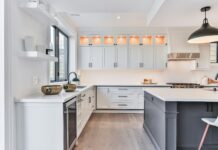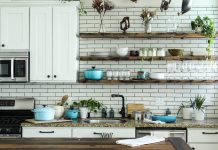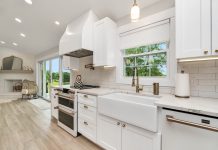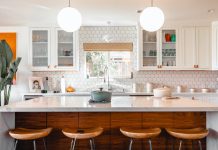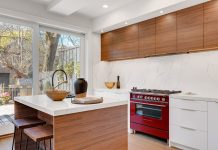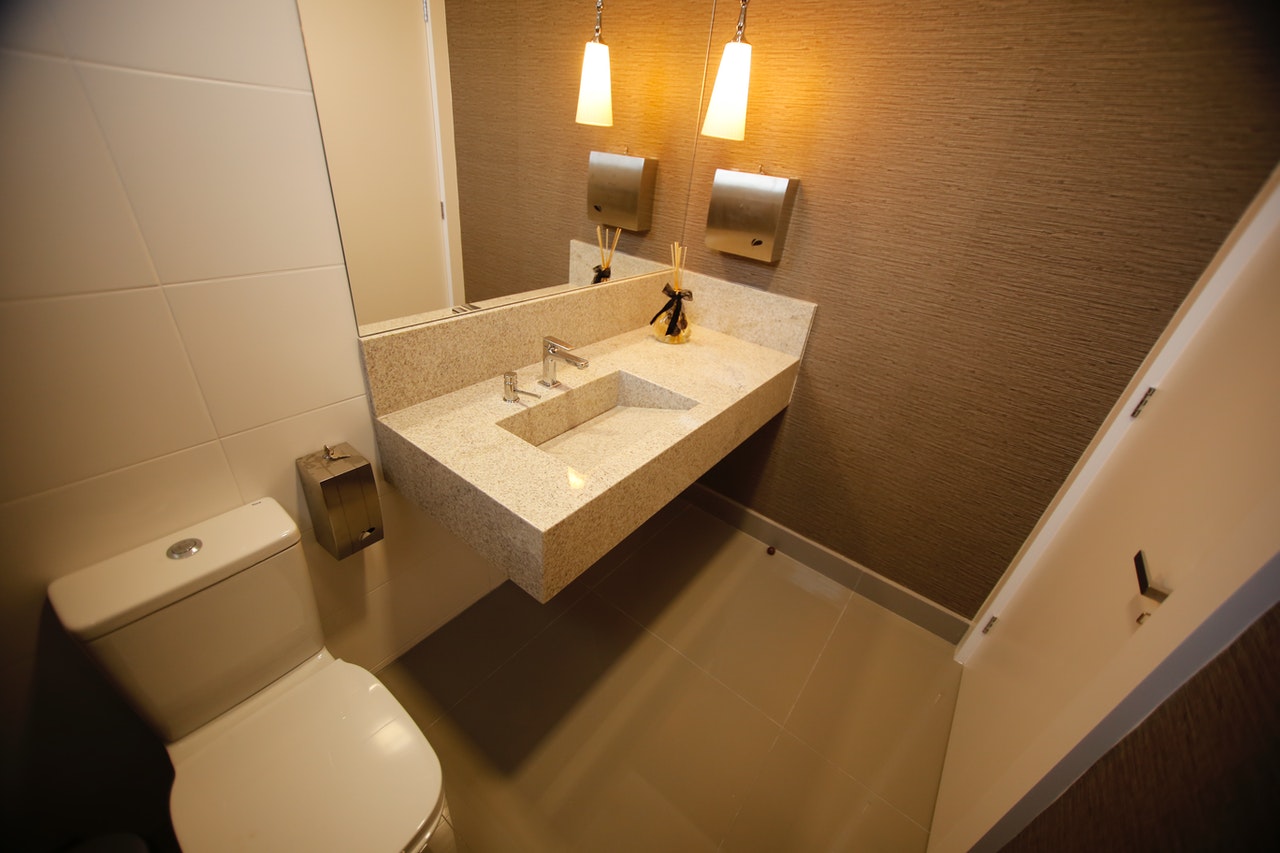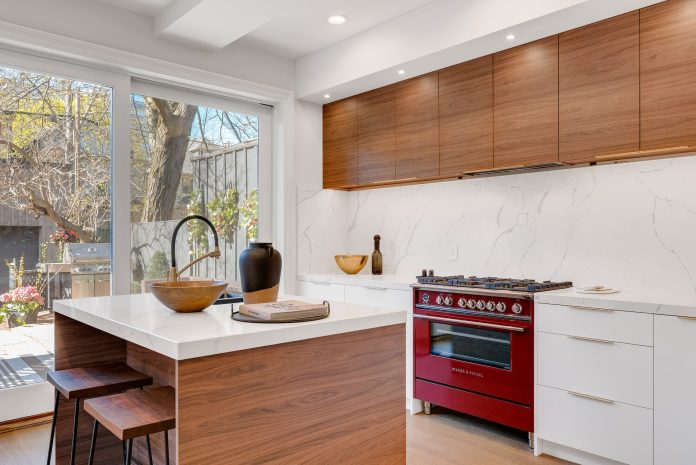Several factors will influence you as you try to decide what color to paint your kitchen. Your taste must be balanced against your kitchen’s size. You may have to sacrifice your favorite color for one that will not detrimentally affect your home’s resale value. Another consideration is how your chosen colors complement each other on the walls, flooring, countertops and major appliances. Finally, the colors you pick will ultimately determine your kitchen’s style.

Source: Benoit Daoust/shutterstock.com
Tip 1: Use Neutral Colors
When you paint your kitchen in a neutral color, you have the freedom to use more creativity on fixtures like countertops or cabinets. Moreover, you are not likely to destroy the resale value of your home when you utilize traditional colors in the kitchen. White is one of the most popular choices for kitchen walls, but you no longer need to stick with classic shades. While bright white is stark and too sterile for some, it will be strikingly contemporary when done properly. However, you can soften your kitchen with off-white, cream or ivory paints.
Neutral tones do not have to revolve around a white base. You can also create warmth in your kitchen with less common colors like sage, tan or beige. Use care not to make the space bland. Trending colors that are still neutral include gray and slate, which can make your kitchen look either rustic or modern. Spacious kitchens benefit if you break up expansive white surfaces with stained cabinets or black glossy tiled floors, for example.
Tip 2: Play Around With Blues
Always remember that color affects emotions. Navy blue is one of the more common colors for a kitchen other than white. However, you do not have to limit yourself to one shade of blue since it is a versatile color that rarely seems out of place in the kitchen.
As a moody tone has become a prevailing theme beyond the den, gray-blue has become an appealing backdrop in kitchenettes and dining areas. It pairs well with white or cream trim, sinks or countertops and allows wood cabinetry and flooring to pop.
Darker colors provide subtle moodiness to your kitchen without detracting from its sense of comfort. It can benefit from the brightening effects of metal trim or fixtures and light-colored wood such as pine. Brass or gold keeps otherwise gloomy colors soft and rich. Vinyl plank flooring is an alternative that can provide the same contrast and appearance as wood without additional maintenance requirements.
Even bright shades of blue can provide a grounding effect if utilized strategically. Royal, cerulean or ocean blue are great choices to paint an island in a kitchen that is too white or has a lot of decorations. Another unique way to use blue is to paint it on the cabinets and leave the walls cream, ivory or another neutral shade. Finally, teal and other shades of bright blue are fantastic if you want to create a collage of complementary colors. Examples of colors to add to bright blue are green, yellow or gray.

Source: Pixel-Shot/shutterstock.com
Tip 3: Offset Deep Colors
With the advent of an age when everyone wants to stand out, more homeowners than ever paint their kitchens with bold and innovative colors. Don’t be afraid to try colors such as purple, green (think dark moss, pewter, or vivid lime), red (such as maroon or fire engine), brown or pink.
It is essential to offset dark colors in a kitchen, especially if it is a tiny space. Otherwise, the area where you prepare and cook food can have a claustrophobic feel. You can lighten your kitchen with mirrors or metal appliances, contrast its dark walls with white cabinets or brighten its aura with light-colored backsplashes. You can also add art, furniture or decorative lamps to break up some of the heaviness of a vividly colored kitchen. Light accents make it feel like you are in a larger, warmer room. On the other hand, dark colors are fabulous for spacious kitchens because they can add intimacy.
Tip 4: Make Black Paint Work in Your Kitchen
Black paint belongs in a separate category because it both makes a bold statement and yet is surprisingly neutral. Much like blue, you can paint either your walls or cabinets black and contrast them with other colors. Because of black’s neutrality, you can pair it with a broader range of colors, such as red, purple and gold. If your kitchen is a wide-open space, you can make it more attractive when you add black cabinets to create the illusion of borders.
Silver or gold trim and fixtures match equally well with a muted black, ebony or charcoal. Moreover, you can combine black with any material, such as marble, granite, cork or wood. However, black is a color that can overwhelm a small kitchen and make it feel even tinier. Like other dark colors, you can lighten your space with additional and brighter lights, mirrors or white trim. When you use black paint effectively, your kitchen gains sophistication, drama and elegance.

Source: Papah-kah/shutterstock.com
Conclusion
“What color should you paint your kitchen?” seems like an overwhelming question. There are plenty of colors and shades to choose from, not to mention the styles and ways to provide contrasts. If you choose a style you want, it becomes easier to coordinate the colors of paints that will work optimally. Moreover, you will find that the colors you use to paint your kitchen work best when you follow the available space rules. Choose mainstream instead of trendy colors if you want to sell your home. Finally, you need to paint your kitchen with colors that will complement the materials you would like to use. With these tips, go ahead and don those coveralls and get painting!

